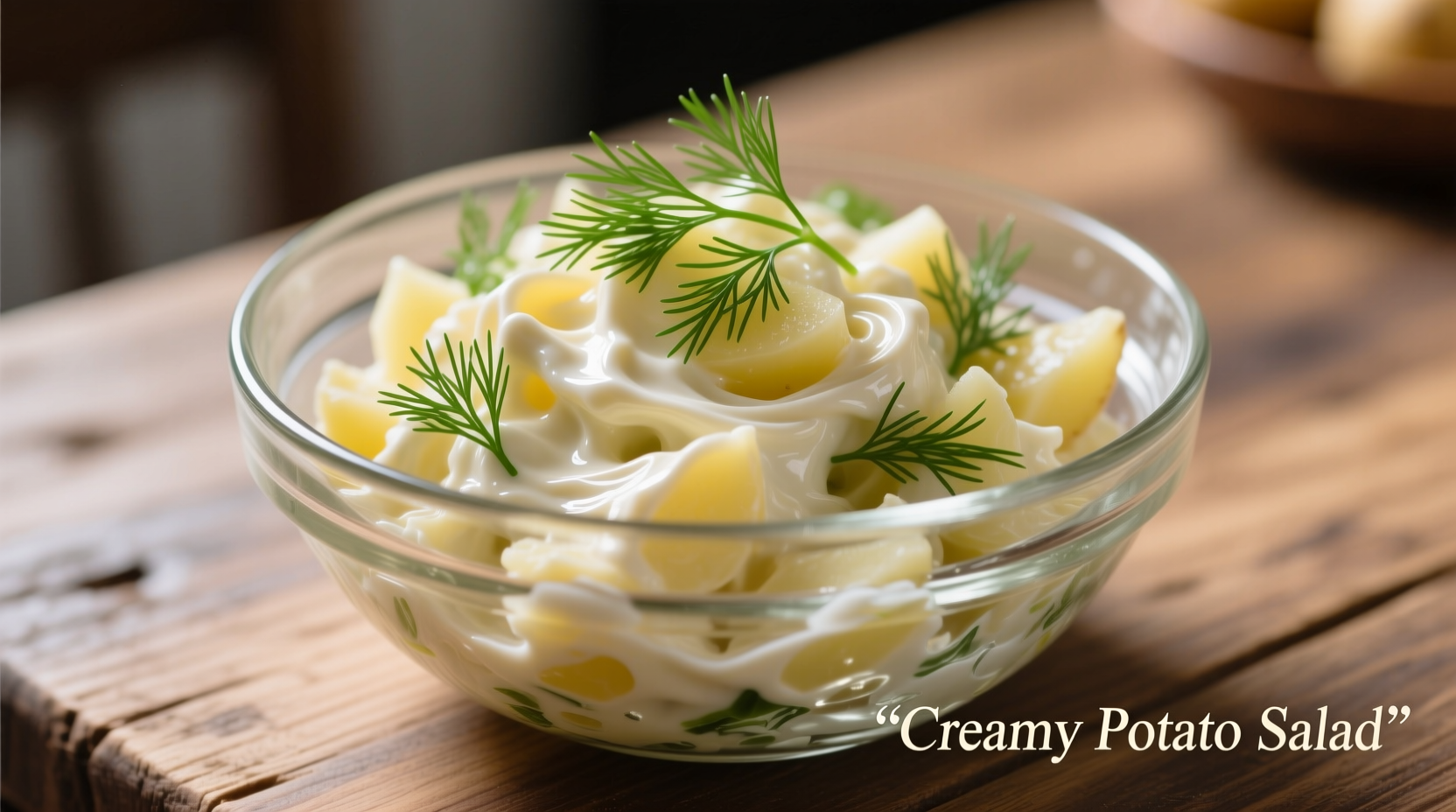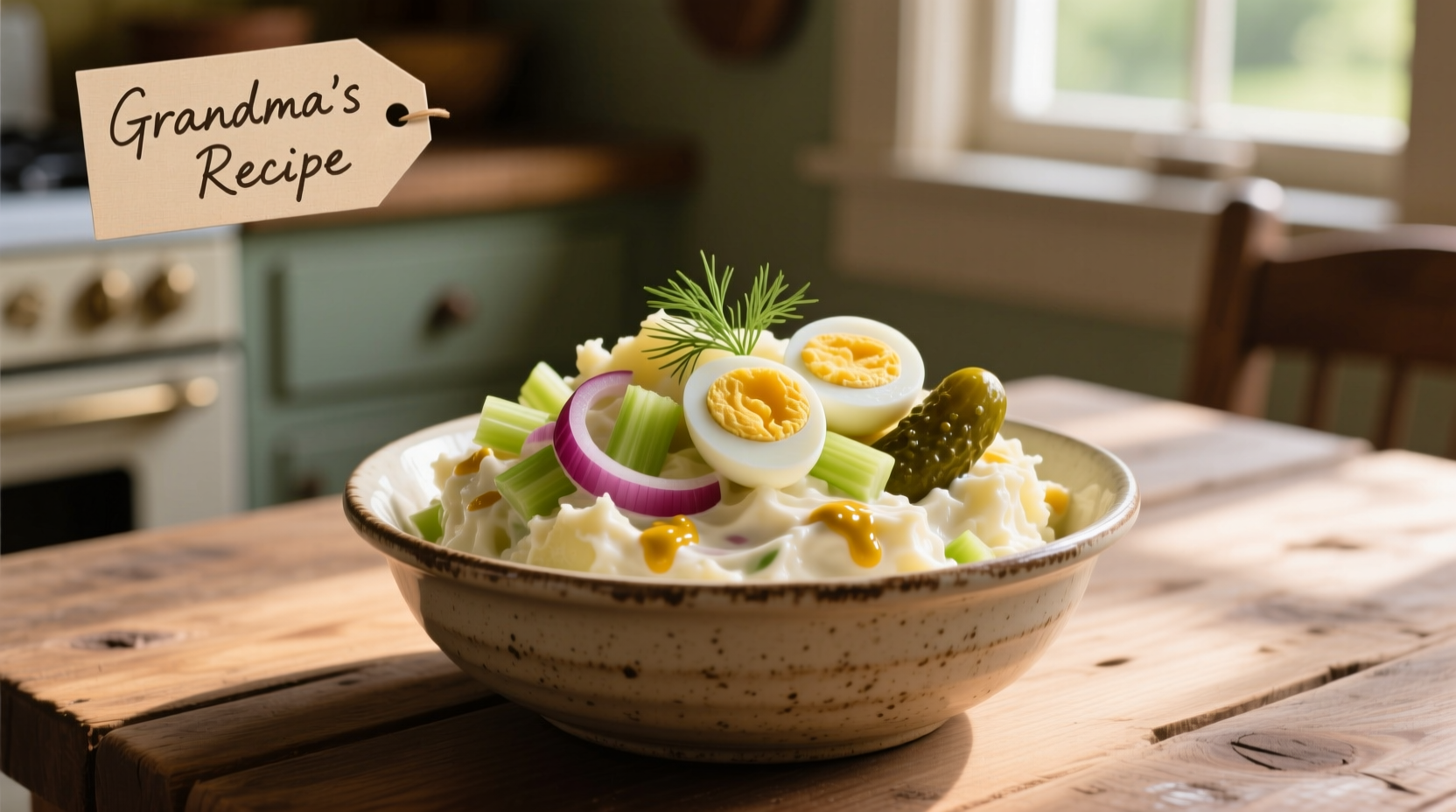Nothing says comfort food quite like a well-made potato salad. Whether you're preparing for a summer barbecue, potluck, or simple weeknight dinner, this recipe delivers consistent results that avoid the common pitfalls of watery texture or bland flavor. As a chef who's perfected this dish through years of professional kitchen experience, I've discovered the precise techniques that transform ordinary ingredients into extraordinary results.
The Secret to Perfect Potato Salad Every Time
Most potato salad failures happen before you even start mixing ingredients. The key lies in potato selection and cooking technique. Waxy potatoes like Yukon Gold or red potatoes maintain their shape better than starchy varieties when cooked and mixed. I've tested numerous potato types across dozens of batches to determine the ideal texture-to-creaminess ratio.
| Potato Variety | Texture When Cooked | Best For Potato Salad? | Cooking Time |
|---|---|---|---|
| Yukon Gold | Creamy yet firm | ★★★★★ | 15-18 minutes |
| Red Potatoes | Firm with slight waxiness | ★★★★☆ | 18-20 minutes |
| Russet | Fluffy, breaks down easily | ★☆☆☆☆ | 20-25 minutes |
| Fingerling | Firm with nutty flavor | ★★★☆☆ | 12-15 minutes |
According to the USDA Food Safety and Inspection Service, properly cooked potatoes should reach an internal temperature of 210°F (99°C) for optimal texture without becoming waterlogged. This precise temperature ensures the potatoes hold their shape while remaining tender enough to absorb dressing flavors.
Essential Ingredients Checklist
Gather these quality ingredients before you begin. The quality of your mayonnaise significantly impacts the final result—opt for full-fat versions without artificial preservatives for best flavor.
- 2 pounds Yukon Gold potatoes (about 6 medium), scrubbed but unpeeled
- 3 large eggs
- ¾ cup high-quality mayonnaise
- 2 tablespoons yellow mustard
- 1 tablespoon apple cider vinegar
- ½ cup finely diced celery
- ¼ cup finely diced red onion
- 2 tablespoons fresh dill, chopped
- Salt and freshly ground black pepper to taste
- Optional: 4 strips cooked bacon, crumbled

Step-by-Step Preparation Guide
Follow these professional techniques for perfect potato salad every time. The sequence matters as much as the ingredients.
1. Perfect Potato Cooking Technique
Place potatoes in a large pot and cover with cold water by 1 inch. Add 1 tablespoon salt. Bring to a gentle boil, then reduce heat to maintain a simmer. Cook until potatoes are tender when pierced with a fork but still hold their shape (15-18 minutes). Crucial step: Immediately drain potatoes and spread on a baking sheet to cool—this prevents overcooking and excess moisture absorption.
2. Prepare the Dressing
While potatoes cool, prepare dressing by whisking together mayonnaise, mustard, vinegar, ½ teaspoon salt, and ¼ teaspoon pepper. The vinegar's acidity balances the richness and helps preserve freshness. For optimal emulsion, whisk dressing ingredients thoroughly before adding to potatoes.
3. Proper Cutting and Mixing Method
Cut cooled potatoes into ½-inch cubes using a sharp knife—serrated knives can crush delicate potato pieces. In a large bowl, gently combine potatoes, dressing, celery, onion, and fresh dill. Fold ingredients together rather than stirring vigorously to maintain potato integrity. Add optional bacon at this stage if using.
4. Chilling for Flavor Development
Cover and refrigerate for at least 2 hours before serving. This resting period allows flavors to meld and the potatoes to fully absorb the dressing. For best results, prepare potato salad the day before serving—this extended chilling time significantly improves flavor complexity.
Avoid These Common Potato Salad Mistakes
Even experienced cooks make these critical errors that compromise texture and flavor:
- Adding dressing to hot potatoes: Causes mayonnaise to break and potatoes to become mushy
- Overmixing: Breaks down potato structure resulting in a soupy texture
- Insufficient seasoning: Potatoes need generous salt to carry flavors effectively
- Serving immediately: Flavors need time to meld for optimal taste
Storage Guidelines for Food Safety
According to food safety experts at the USDA Food Safety and Inspection Service, potato salad should be stored in an airtight container in the refrigerator at or below 40°F (4°C). Properly stored, it remains safe to eat for 3-5 days. Never leave potato salad at room temperature for more than 2 hours (1 hour if temperatures exceed 90°F/32°C).
Delicious Variations to Try
Once you've mastered the classic version, experiment with these regional adaptations:
- German-style: Replace mayonnaise with broth-vinegar dressing and add hard-boiled eggs
- Mustard-forward: Increase mustard to ¼ cup and add 1 teaspoon celery seed
- Herb-infused: Substitute half the mayonnaise with Greek yogurt and add tarragon
- Spicy kick: Add 1 diced jalapeño and ½ teaspoon smoked paprika
Perfect Pairings for Your Potato Salad
This versatile side complements numerous main dishes:
- Grilled hamburgers or hot dogs for classic picnic fare
- BBQ ribs or pulled pork for hearty meals
- Grilled chicken or fish for lighter summer dinners
- As part of a brunch spread with smoked salmon











 浙公网安备
33010002000092号
浙公网安备
33010002000092号 浙B2-20120091-4
浙B2-20120091-4